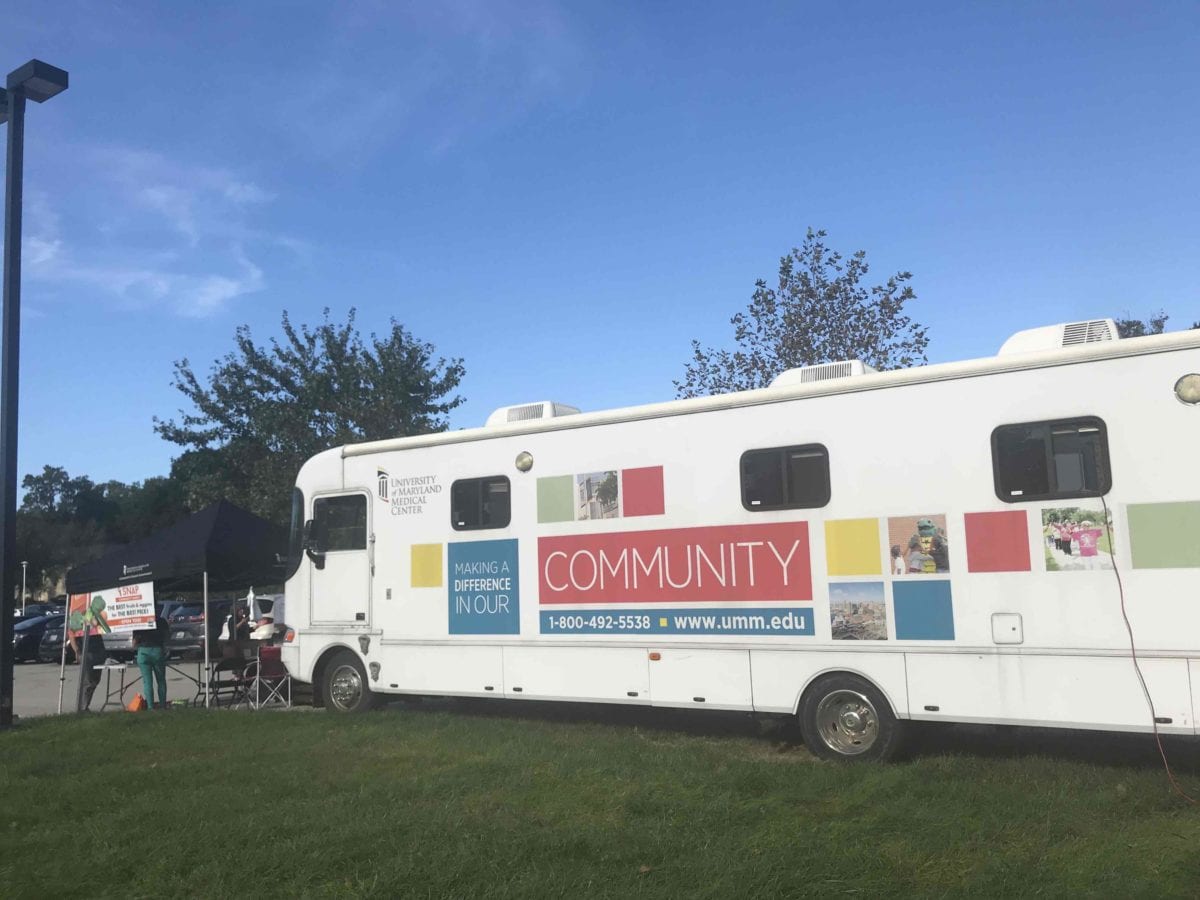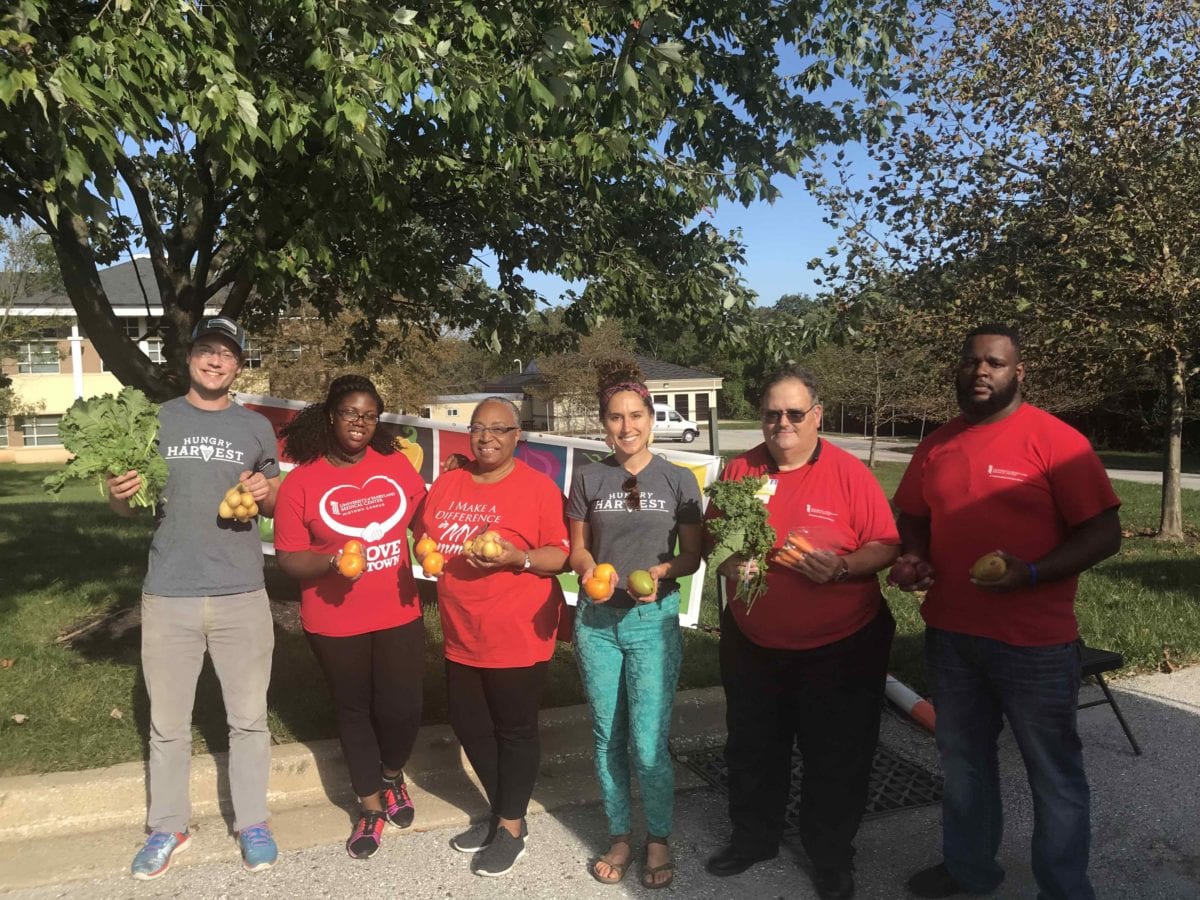On a recent Wednesday outside the University of Maryland Medical Center Rehabilitation & Orthopaedic Institute in West Baltimore, a small tent and large mobile unit attracted attention in the corner of the parking lot. Staff and patients walked over from the facility, and residents from the community pulled up around 4 p.m.
They were all there to grab a week’s portion of produce, which includes 2-3 fruits, 4-5 vegetables and a leafy green. Eggplant proved popular at this location.
“We want to empower people to take control of their health, so we also offer replacement items,” said Will McCabe. “If someone sees something in the bag they don’t want, they can replace it with something else.”
McCabe is food access manager with Baltimore startup Hungry Harvest, which runs a series of similar markets under the banner of Produce in a SNAP. Partnering with community organizations, the company coordinates weekly markets to provide an affordable, in-person way to access its boxes of its “ugly produce” that was discarded by farmers. The startup has a mission to fight hunger with its services, and team members realized that people on SNAP benefits (fka food stamps) couldn’t get access to its delivery service. The reason: SNAP doesn’t widely allow online purchases (though there have been pilots at some grocery stores).
“We deliver to people’s doorsteps and people put in their credit card information, but someone on SNAP can’t do that. So we thought, OK, let’s go target communities with concentrations of people living with food insecurity, people who have SNAP or EBT, and come to them.”
To set up the markets, Hungry Harvest looks to partner with organizations like schools, health centers and other community groups. University of Maryland Medical Center is a partner on three market locations in Baltimore, with others at the West Baltimore MARC stop and its Midtown hospital. The locations have provided 10,462 pounds of produce so far.
“On our list it came that Healthy Food Priority Areas – previously known food deserts – were in need and a lot of our patients that we were seeing in a lot of our programs were having trouble getting access to healthier food options. A lot of them use the corner stores or 711 for their weekly shopping or dietary needs,” UMMC community health specialist Asunta Johnson said.
Along with food access, health is an important component of the markets. UMMC provides recipe information for the food offered in the produce bag. The health organization also brings its mobile unit along, offering the option for BMI and blood pressure checks.

The markets are driven by Hungry Harvest’s mission, but it’s also a for-profit startup that has to consider the business case for each initiative. So the company made sure the markets were sustainable.
“Because it’s self-sufficient, all the money generated goes back to cover the costs of produce and delivery. That allows us to be able to grow to new locations,” McCabe said.
Produce in a SNAP is already being introduced in D.C., and the company plans to set up markets in Philly next year. That growth is happening in addition to expansion of the delivery service.
With community markets, Hungry Harvest looks to expand affordable produce access in food-insecure areas







